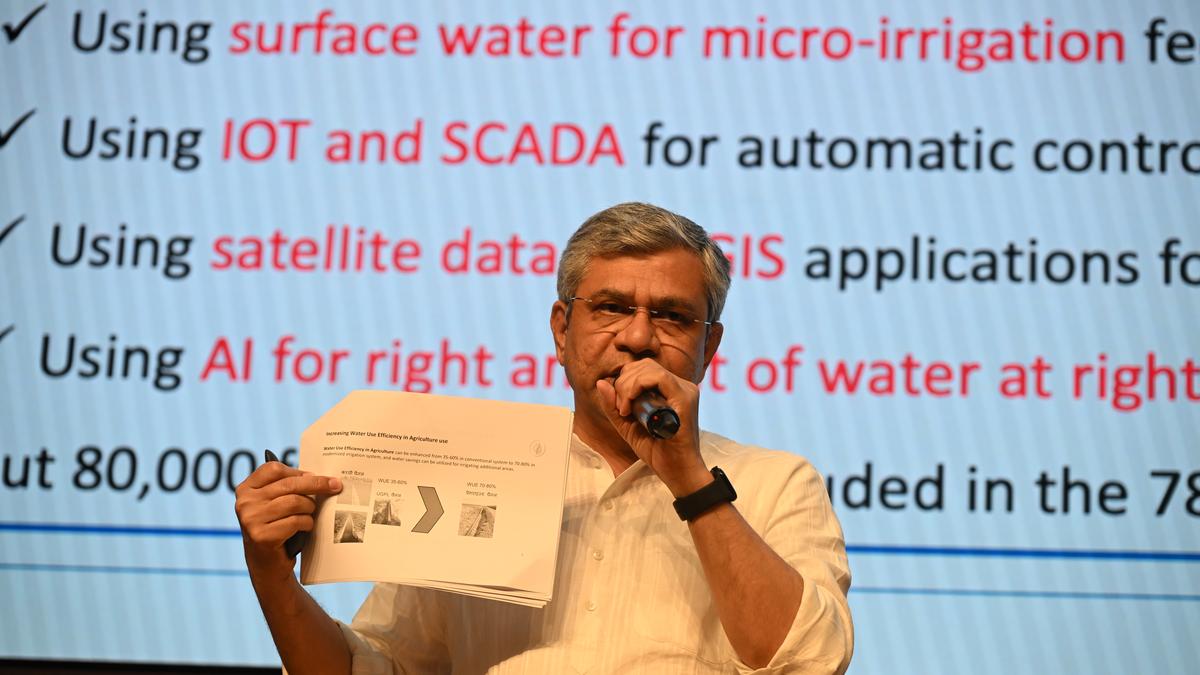M-CADWM Scheme

- 11 Apr 2025
In News:
The Union Cabinet has approved the Modernisation of Command Area Development and Water Management (M-CADWM) scheme as a sub-scheme of the Pradhan Mantri Krishi Sinchayee Yojana (PMKSY). The scheme will be implemented during 2025–26 with an initial outlay of ?1,600 crore.
Background
- PMKSY was launched in 2015-16 to expand the cultivable area under assured irrigation, improve on-farm water use efficiency, and enhance access to water at the farm level.
- The Command Area Development and Water Management (CAD&WM)programme was first initiated in 1974-75, and restructured in 2004. It has been implemented under PMKSY - Har Khet Ko Pani since 2015-16.
Objectives of M-CADWM
- Modernize the irrigation water supply network to ensure efficient delivery from existing canals or other sources to farming clusters.
- Enhance Water Use Efficiency (WUE) and promote sustainable agricultural practices.
Key Features
- Technological Integration:Adoption of SCADA (Supervisory Control and Data Acquisition) and Internet of Things (IoT) for real-time water accounting and monitoring.
- Infrastructure Development:Installation of underground pressurised piped irrigation systems up to 1 hectare per farm, supporting micro-irrigation from source to farm gate.
- Sustainable Water Management:
- Implementation of Irrigation Management Transfer (IMT) to Water User Societies (WUS).
- These societies will be supported for five years and linked with Farmer Producer Organisations (FPOs) and Primary Agricultural Cooperative Societies (PACS) to strengthen local management.
- Youth Engagement:The scheme aims to attract youth to agriculture by promoting the use of modern irrigation technologies and creating opportunities in agrarian entrepreneurship.
Components of CAD&WM (Under PMKSY)
- Structural Interventions:On-Farm Development (OFD) works, construction of field, intermediate and link drains.
- Non-Structural Interventions:One-time functional grants to registered Water Users’ Associations (WUAs), capacity building, demonstrations, and adaptive trials to promote efficient water use.
Expected Outcomes
- Improved irrigation efficiency and agricultural productivity.
- Enhanced water conservation and equity in water distribution.
- Strengthened community participation in irrigation management.
- Boost to rural employment and agriculture modernization.
Cafe Rista
- 11 Apr 2025
In News:
The Uttar Pradesh Police has taken a unique step to humanize policing and strengthen community engagement through the launch of Cafe Rista—a public-friendly café located within the Noida Police Commissionerate, Sector 108. This initiative is an example of citizen-centric policing aimed at improving the image of law enforcement and promoting positive interactions with the public.
Key Highlights:
- Launched by:The café is the brainchild of IPS officers Laxmi Singh and Babloo Kumar, with active public outreach by IPS Preeti Yadav, who brought attention to the initiative through a viral social media video.
- What is Cafe Rista?
It is a pastel-themed, aesthetically pleasing café designed to serve affordable, hygienic, and tasty meals to both civilians and police personnel. The ambiance is warm and welcoming, featuring quirky motivational quotes and a calming decor.
- Strategic Location:The café is situated close to the Family Dispute Resolution Clinic within the Commissionerate. This proximity serves a dual purpose:
- It offers a space of relaxation for families and individuals undergoing counselling or dispute mediation.
- It provides psychological respite for those visiting under stressful circumstances.
Objectives of the Initiative:
- Break Stereotypes:Challenge the conventional perception of the police as unapproachable or intimidating by creating an informal and friendly setting.
- Promote Informal Engagement:Encourage dialogue and trust-building between civilians and police personnel in a relaxed, non-threatening environment.
- Support Mental Well-Being:The café contributes to the morale and mental wellness of both the public and police officers, especially those on demanding duties.
- Welfare Policing Model:Aligns with the concept of "welfare policing", wherein the police function not only as enforcers of law but also as community caretakers.
- Public Outreach through Social Media:The initiative leverages platforms like Instagram and Twitter to showcase the human side of policing, creating transparency and relatability.
